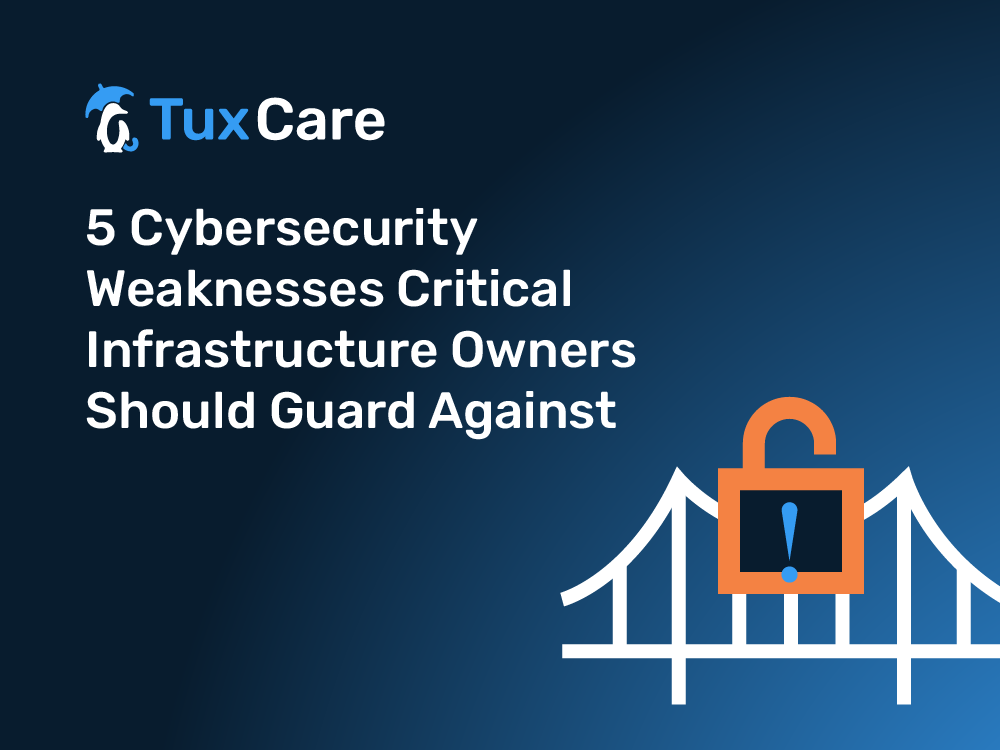5 Cybersecurity Weaknesses Critical Infrastructure Owners Should Guard Against
A nation’s infrastructure makes for an attractive target because infrastructure is so critical to everyday life. Critical infrastructure such as electricity distribution, telecoms, and oil pipelines are therefore frequently under attack by everything from state actors to ransomware groups looking for a big payoff.
But there’s another reason why critical infrastructure is attractive to threat actors: the nature of the hardware and software supporting critical infrastructure means that critical infrastructure often has unique weaknesses that hackers can target.
In this article, we’ll cover five types of critical infrastructure vulnerabilities that infrastructure operators should watch out for.
1. Software and Hardware Vulnerabilities
In critical infrastructure, you often see organizations run legacy software and hardware. For example, older operational technology (OT) systems with insufficient user and system authentication, data authenticity verification, or data integrity checking features that can allow attackers uncontrolled access.
It stems from the fact that OT stays in place for decades. Critical functions can sometimes run on 1990s hardware and software simply because it’s too expensive or too hard to migrate to a newer solution.
That also means the software in OT is commonly riddled with unpatched vulnerabilities. Patches may not be available, and for some OT it’s tough to install patches because of the isolated nature of this technology (unless live patching is used). As a result, attackers exploit hardware component vulnerabilities to access critical infrastructure systems.
2. Authentication and Access Control
Critical infrastructure also commonly suffers from poor access control within authentication mechanisms, including reliance on default configurations, weak passwords, lack of encryption, insufficient access controls, and lack of multi-factor authentication. Again, it stems in part from the fact that so much of the OT in use in critical infrastructure relies on legacy hardware and software.
It could be as simple as a lack of encryption where legacy SCADA controllers and industrial protocols lack the ability to encrypt communication. As a result, attackers can use simple sniffing software to discover usernames and passwords.
There’s also a concern about third-party connections: third-party vendors may require access to critical infrastructure systems, but failure to secure these connections can allow attackers to gain access to the system.
Software supply chains can carry risks too, as components and software used in critical infrastructure are at times sourced from specialist third-party vendors who do not have robust security controls in place.
3. Human Weaknesses
Just like cybersecurity in any other organization, human weaknesses are exploited by threat actors targeting critical infrastructure. Think about social engineering attacks, insider threats, lack of security awareness training, and inadequate response planning.
Attackers can use social engineering tactics to trick employees into revealing sensitive information or providing access to critical systems. But that doesn’t mean the threat will come from the outside – malicious insiders can use their access to critical infrastructure systems to carry out attacks or leak sensitive information.
Part of it comes down to a lack of security awareness training, where employees are simply not aware of the risks of cyberattacks – inadvertently putting critical infrastructure systems at risk.
4. Limited or No Attack Monitoring
Lack of monitoring and logging is a major risk because a failure to monitor and log system activity can mean infrastructure providers won’t detect attacks – and won’t be able to respond to an attack should one occur. This goes for a lack of network visibility too: poor network architecture can make it difficult to implement effective security controls and monitor system activity.
A lack of monitoring may in part be due to limited cybersecurity resources – but it could also be because infrastructure operators are overconfident in their protective measures. In some cases, given the nature of the legacy technology used in critical infrastructure, it might come down to a matter of complexity.
5. Poor Incident Response Planning
An incident response plan is an essential component of an organization’s cybersecurity strategy, as it provides a structured and coordinated approach to detecting, containing, and responding to security incidents.
But with little to no response planning, infrastructure operators will struggle to cauterize an attack in progress. In contrast, a well-designed incident response plan can help organizations to respond to security incidents quickly and effectively, minimizing the impact on operations and reducing the risk of further damage.
So critical infrastructure providers need to focus on a response plan that helps catch an attack underway, to protect sensitive information – and indeed limit access to things like industrial control systems (ICS) that can be used to cause wider infrastructure damage.
Patching as a Core Defense
There can be plenty of weaknesses in the technology that supports critical infrastructure – and organizations need to adopt an improved cybersecurity posture to strengthen these weaknesses.
But, no matter where the weaknesses lie, patching remains a key tool that helps critical infrastructure providers close the doors to threat actors. Patch consistently and regularly, and you close the vulnerabilities that many attack strategies rely on.
For critical infrastructure, live patching can be a real game changer because live patching enables organizations to patch without disrupting infrastructure operations. To find out more about how live patching can work for your organization visit our page on critical infrastructure here.



 Documentation
Documentation Login
Login



